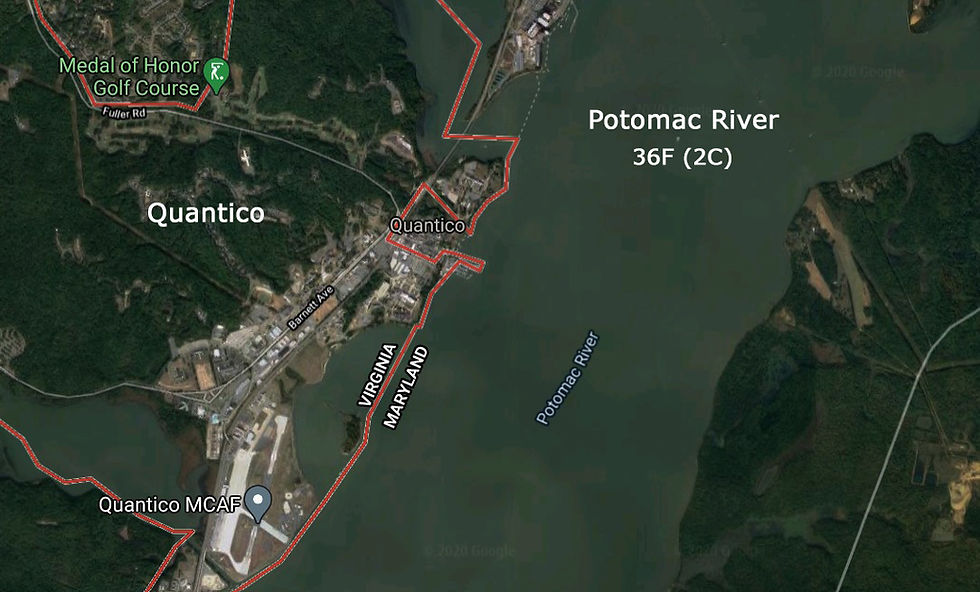Rule 2 / Case 7
- Moulton Avery

- Nov 24, 2021
- 2 min read
Updated: Feb 25
Always Dress For The Water Temperature
Nine U.S. Marines March 6th, 1968, Potomac River, Quantico, Virginia It was 4 p.m. on a Wednesday afternoon. The air temperature was in the 40’s (5-9C), and a light breeze created small ripples on the surface of the water. Nine U.S. Marines, dressed in sweat suits and paddling a 25-foot canvas covered “war canoe” with a 4-foot beam, were nearing the end of a two-mile crossing of the Potomac River, 25 miles south of Washington, D.C., when they suddenly capsized approximately 100 yards from shore.


Excellent Swimmers
The Marines were all excellent swimmers, part of an elite group that had trained for two months as close-combat, physical-fitness, and water-survival instructors at the nearby Marine Corps Physical Fitness Academy. They were a tough bunch, and their group leader had taught water-survival for five years.
No one was wearing a PFD when the canoe turned over, but it was equipped with seat-cushion-type life preservers - one for every man on board. Why they capsized, and whether they attempted to right and reenter the canoe will never be known, because despite a valiant attempt to swim to safety, every single one of them drowned. The water temperature was 36 degrees (2C).
Lesson Learned No matter how strong, fit, determined or motivated you are, sudden immersion in cold water is a life-threatening event. Furthermore, no matter how well you can swim, cold shock induced swimming failure can make it impossible for you to make progress in the water. No matter how strong or physically fit you are, when your muscles get cold enough, they simply stop working.
Major Contributing Factors
No PFD (Lifejacket)
Not Dressed For Water Temperature
Unable To Recover From Capsize
Unable to Call For Help
Unaware of Hazards
Being Complacent / Overconfident
Paddling Solo




vues youtube sosvues also has a surprisingly social element. Watching other players’ moves, reacting to their strategies, and sometimes teaming can be painful up indirectly adds a layer of engagement. Even though it’s mostly free-for-all, you can’t help but pay attention to how other holes behave.
At Retro Bowl 26 Wearing a proper PFD + thermal protection must always come first.
To become a SoFlo Wheelie Life master, practice at least 15 minutes every day - play online at https://soflowheelielife.io.
Experience high-speed arcade fun with Slope Run! The minimalist design hides one of the most addictive challenges you’ll ever face.
Drive Mad unblocked isn't just a game—it's a thrilling driving challenge: guide your small car to the finish line, and while Play Drive Mad is easy, the surprising obstacles on each track make conquering these wild courses a real adventure!